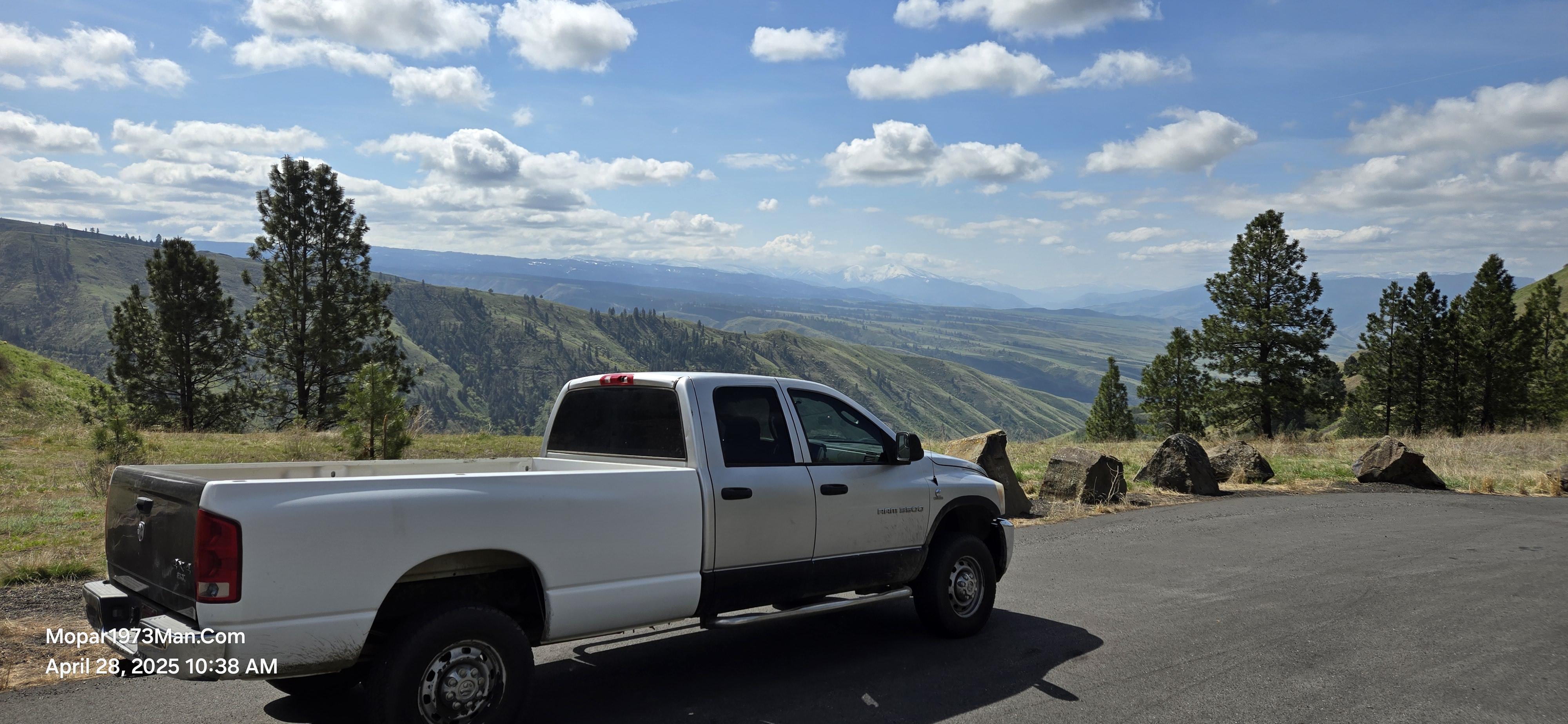
Everything posted by Mopar1973Man
-
EGT's after the turbo
This is well outside the common Joe Cummins owner. For someone that is pushing to grab every last bit of power out of engine, this might be an excellent article to be put together in the article database.
-
Truck Let Me Down
Hua? The lower alternator fastener is a bolt and nut combo. So if you get the nut off the back side the bolt will come out. I know that might be tough with the alternator in the way and the head of the bolt missing. Yeah, you might have to pull that bracket off you slide the bolt out.
-
He351ve stand alone Arduino controller code for 2nd Gen Cummins
Quadzilla can do that right now. You can set EGT limit keeping EGT's below a set limit. Way better timing control than Smarty & TST could. Fuel control of the Quadzilla is the best fuel control for 24V trucks.
-
Towing toy hauler
Lets say with a true stock truck and heavy trailer on a steep grade you can get rather wild EGTs without any mods at all. Let say one off my first towing trips with gauges I could pass the 1400 mark as I said truly stock.
-
Abs module goes out after 5 minutes
I would suspect it to be AC noise issue if anything. Being mine was both AC noise and a bad passenger wheel tone ring.
-
Soliciting Recommendations for an ECM source or Rebuilder
Yes it is replaceable. Just got to get the can opened up. Then carefully unsolder the two memory chips and solder on the new ones. The Mylar PCB is glued to the aluminium can so it might make soldering challenging.
-
Oil change
Either reduce the blown on the piston rings or reduce the boost and drive pressures.
-
Oil change
At least my junk isn't blowing oil all over the place. Mine does leak a bit around the gear case and burn a bit through valve seals.
-
Towing toy hauler
Vulcan Performance.
-
EGT's after the turbo
True. But why?
-
EGT's after the turbo
Just lot easier to look at how hot the fire is leaving the head than attempting to do math and figuring out from post temps. I really don't care what the temps are after the turbo. I do care above the fire leaving the head that it not hot enough to damage pistons or the turbo. Back to using pre-turbo temperatures. Why make it complicated with math and figures when you just drill a pre turbo port and be done.
-
Oil change
Make it 300k+ junk... Typically any "name brand oil" with API of CI-4 and above with a viscosity of 15w-40. Gotta ask @dorkweed about his 84k oil change on SuperTech.
-
Emissions time is here
Just remember two things that will not work when in this state. Exhaust Brake High Idle Kit Both these products require the IVS in the APPS to toggle to idle position for them to function. With what @Me78569 is suggesting will work for smog reasons but will also disable the device I listed above.
-
Towing toy hauler
I ran RV275 and +50HP injectors with a stock HX35W turbo. You can go up to +100HP injectors on a stock HX35W.
-
Wheels and Tire Setup
All I can say is just wait till winter time or wet season. You are going to hate those tires poking out like that. I finally got mine tucked back under the fenders. After driving all winter and spring I started hating every 20 miles looking for a service station so I could clean the side windows. 20-30 miles the windows were so coated with salt and mud that you couldn't see in the mirrors to pass any one or lane change safely.
-
Towing toy hauler
4" is fine... No reason for 5". Even stock 3" will not hamper performance being after 15 years of stock 3" exhaust I've done very well at setting high MPG numbers in the past and performance is still awesome.
-
Towing toy hauler
I've confirm the turbo specs on the HX35 is correct. Just the injector sizes don't seem right though. I know the injectors I've got are 7 x 0.0085 for +75 HP. Here is what I stole off of DAP site...
-
Towing toy hauler
As you see all 2nd gen list 245s for tires on the 2500 series. Even though most 4WD were 265s.
-
Towing toy hauler
-
Towing toy hauler
3500 series yes... 2500 was 265's for 4WD I'm sure of. As for the 235's the only series I knew for sure was the 3500. This goes back to the argument of the information posted in the door jam about tire size and information. Which 90% of the time is untrue. Even both of my truck post wrong information. My 2002 states 245/75 R16 was stock (wrong it was manufactured with 265/75 R16) then my 1996 states 215/75 R16 was stock (it was manufactured with 235/85 R16). So as for the 245's I think that was more of 2WD series tire personally I've never seen it on any tire as of yet. Still in all getting back to the OP there should be any issue towing with his combo. Might just have to add more fuel and it would pull better.
-
NO BUS NO START NOW NO CRANK? HELP PLEASE
Here is the starting circuit for our trucks. I know the J/C in the PDC that is a ground bar inside this is the same bar that has ground for the fuel pump relay too.
-
Towing toy hauler
I know the 245/75R17 is not factory. They are about 0.1" to 0.3" smaller depending and what you compare them too. This makes the rev per mile for your tires 660 Rev/mile. This should have the effect of smaller final gears making towing easier. My 235/85 R16 are taller and narrower or 265/75 R16 are taller and wider. Typically the stock size is 245/75 R16 for 2WD trucks and 265/75 R16 for 4WD. This is only rule of thumb... I've seen 2WD truck sold with 265/75 R16 as well. https://tiresize.com/calculator/
-
Bears in the trash? Problem solved!
I'm surprised the bear didn't attack the animated clown...
-
Shocks
So my current pressures I'm 60 front 40 in the rear. So using your tables I would be 50 in the front and 30 in the rear. MPG??? Just for fun, I'll try your table and pressures.
-
Shocks
Not all table are created equal... This Michelin weight to pressure table. Same sized tire and capacity... 35 = 45 PSI (10 PSI different with Michelin) 40 = 48 PSI 45 = 52 PSI 50 = 57 PSI 55 = 60 PSI 60 = 63 PSI 65 = 68 PSI 70 = 72 PSI 75 = 76 PSI Still in all this would with either table have my rear axle pressure below the 35 PSI because tire weight is only 1430 pounds (Axle weight 2860 / 2). So would a person gamble with 30 PSI at 1,430# ??? 1430# / 3042 = 0.47 x 80 = 37 PSI (Currently set to 40)




